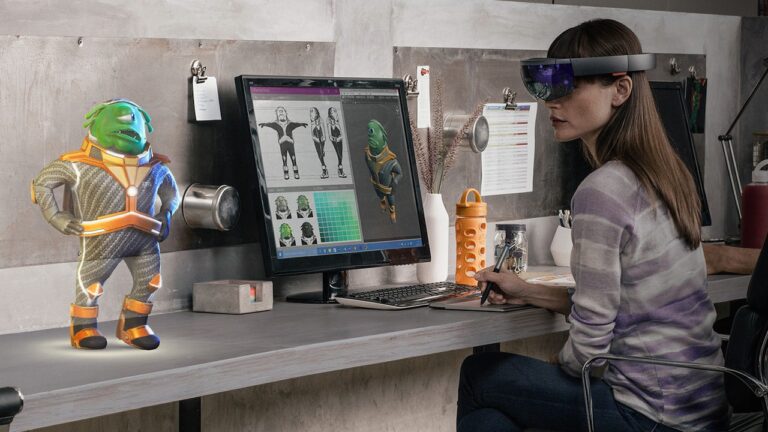Creating Inclusive Software with AI and Accessibility
In today’s digital-first world, software plays an essential role in shaping how we communicate, learn, shop, and live. But technology is only truly powerful when it is accessible to everyone. This is where the intersection of AI and accessibility testing is starting to change how we understand, develop, and deliver inclusive software.
Artificial intelligence isn’t simply making digital platforms smarter, but it is also beginning to make digital environments more adaptive to the needs of users with disabilities. The development of automated voice systems, cutting-edge screen readers, and inclusive design principles is enhancing and reimagining how we think about designing software for everyone, irrespective of their abilities.
Why Inclusion in Software Matters?
Inclusivity does not only refer to a principle of design. It is a duty to take care of what one must by way of maintaining standards. Many individuals in the world have a visual, auditory, cognitive, or motor disability. Without accessible software, they will be locked out of essential services, including education, health, and work.
For businesses, ignoring accessibility is no longer an option. More than complying with legislation, accessible products expose additional market opportunities and create brand trust.
People want to interact with software that respects their needs. Accessibility is therefore not a charitable consideration—it’s smart business. And this smart business now comes with AI, to enable software teams to meet the needs of people with disabilities more efficiently than ever.
The Significance of AI in Accessibility
AI has a superior capacity to handle large quantities of data, identify patterns, and adapt to special circumstances. These attributes make it very useful in developing accessible experiences.
- Auto-Personalization at Scale: AI can learn a user’s preferences, such as text size, voice pitch, navigation methods, etc. and automatically modify interfaces.
- Speech with Natural Language Processing: Using voice commands offers users with motor impairment a hands-free interface for navigation.
- Computer Vision: AI can enable visual description of images and videos for those with visual impairment to access visual content.
- Predictive Help: AI can monitor users’ interaction patterns and predict places in their interactions that might cause difficulties. With this, predictive help will proactively assist users.
These are not far-off ideas; they are part of the active development of applications today.
How AI Is Re-envisioning Software Development
Accessibility had been a consideration in software development, but historically it was just a checkbox for the end of the software development process that normally resulted in patchwork solutions for achieving accessibility and often times not even meet real users experiences. AI is now changing this convention.
By integrating AI as a model in the earliest method of development, teams will develop ways for simulating users’ challenges, identifying obstacles, and automatically proposing improvements, essentially engaging AI methods with us to help us be accessibility conscious. For instance:
- An AI-enabled testing framework can flag poor color contrast for visually impaired users.
- Machine learning can help predict how someone with dyslexia would read or interact with that layout.
- AI-powered accessibility dashboards can track live issues and generate recommendations for improvement before anything is released.
AI and the Human Connection
AI can provide the tools, but it’s the human element that ensures real inclusion. Accessibility isn’t just compliance; it is empathy. Developers and Designers need to understand the lived experience of the challenges that those with disabilities face on a daily basis. AI can inform human action and provide intelligence and automation, but it cannot provide the lived experience.
This is why co-design is so important. Inclusion requires interaction, so when people with disabilities are part of the process in design, AI systems can be trained and optimized to deliver genuine inclusion in design activities. AI will support in predicting usability and accuracy; humans will continue to verify accuracy and usability.
Real-World Applications of AI and Accessibility
AI exists in a range of digital products and services that increase access:
- Voice Assistants: Voice tools like Siri, Alexa and Google Assistant give hands-free functionality to a device as well as access for individuals with position limiting barriers.
- Image Recognition for People with Visual Impairments: Apps like Seeing AI, use computer vision to identify surroundings and surroundings’ text, as well as surrounding people.
- Real-Time Captioning: AI can assist in creating captions for meetings, webinars, videos, etc. Consequently offering more access to information to those who are deaf or hearing impaired.
- Adaptive Learning Systems: Platforms that leverage AI to adjust pacing, types of tasks, as well as types of media for the individual based on cognitive access needs.
- AI-Powered Keyboards: Predictive writing features to enable faster communication for individuals with motor impairments.
These examples demonstrate that AI is more than an enabler or doorway to enhancing accessibility; it can also be very meaningful.
LambdaTest’s Accessibility Testing Suite is a comprehensive platform designed to streamline the process of ensuring digital inclusivity across websites, web applications, and mobile apps. It offers a range of tools that facilitate both manual and automated accessibility testing, making it easier for developers and testers to identify and address issues that could hinder users with disabilities.
The suite supports various assistive technologies, including screen readers like NVDA, VoiceOver, and TalkBack, ensuring that applications are accessible to individuals with visual, auditory, and motor impairments. By integrating these tools into the development workflow, teams can proactively detect and resolve accessibility barriers, leading to more inclusive user experiences and compliance with global standards such as WCAG, ADA, and Section 508
Challenges in Merging AI and Accessibility
While merging AI and accessibility has a lot of promise, there will be hurdles:
- Biases in AI Models: AI may not account for the necessary accessibility needs or diverse user concerns if data sets don’t include a variety of users.
- Over-Reliance on Automation: AI suggested changes should be tested by real users to eliminate ineffective or harmful solutions.
- Privacy Issues: The personalization that AI offers is built on users providing sensitive data.
- Cost and Complexity: Embedding AI into the accessibility solution takes money, time, resources that not all organisations have.
Each of these challenges have to be solved through ongoing research, ethical solutions and collaboration of developers, accessibility experts and users.
Accessibility Testing in the Age of AI
Testing is a major part of accessibility in software development. Traditional methods of testing required manual work, expertise, and usually lots of time or money. With AI, accessibility testing can be faster, smarter, and more precise.
The modern accessibility testing platform uses AI to assist in accessibility testing by automatically detecting problems such as low contrast, missing alternative text, missing form labels, and inaccessible forms. Most tools will do more than just identify issues; they will provide possible alternatives or simulating a user’s experience based on the way someone with a disability may use the software.
Some AI accessibility testing platforms employ Continuous Integration/Continuous Delivery (CI/CD) processes. CI/CD allows organizations to continually test the code in the same fashion as a quality assurance check-up; and maintains accessibility as a primary part of the development cycle and not only at the end of the phase!
Business Benefits of Inclusive Software
By adopting an AI-driven approach to accessibility, organizations demonstrate that they are focusing on not just the ethical and legal aspects of accessibility, but also the following business impacts:
- Broaden Market: Accessibility gives you access to millions of new users.
- Invention: Designing for edge cases usually creates features that are often useful for everyone.
- User Impact: Software that are perceived to be inclusive gain a greater amount of loyalty.
- Reduce Risk: Accessibility decreases the chances of lawsuits and penalties.
- Efficient Operations: AI will take care of the routine accessibility checks so that the teams can concentrate on innovation.
Inclusion presents a win-win situation when it is in line with business goals.
The Future of AI and Accessibility
The technology world is entering an interesting time since there are strong signals that point to the following AI advances:
- Emotion Recognition: AI systems may soon, detect when users are frustrated or confused so the system can adjust the content in real-time.
- Augmented Reality (AR) and Virtual Reality (VR): AI will augment immersive environments and improved accessibility through voice navigation, and adaptive design.
- Wearable AI Devices: Smart glasses and haptic feedback devices will open up new sensory input for people with impairments.
- Global Accessibility Standards: AI may help unify splintered global accessibility standards uniform guidance across geographic regions.
With these advances, you could see a future when accessibility is included as the default setting.
Building a Culture of Accessibility
Technology alone cannot create inclusion. True change requires a cultural shift within organizations:.
- Education: Educate teams on accessibility ideas and the role of AI.
- Policy: Work towards organization-wide policies to implement overall accessibility.
- Collaboration: Collaborate with people with disabilities and locally and nationally-based accessibility activists.
- Continuous Improvement: Build and integrate accessibility into a process based on continual improvement, as opposed to a fixed project.
When organizations embed accessibility into their core, the impact of AI will be that much greater.
Conclusion
Creating inclusive software is a technical challenge, but also a social responsibility. While the advancement of AI and accessibility becomes increasingly consequential, new platforms can be built to help people understand and respond to their own abilities. The value of AI is shifting accessibility from a checklist, to an innovation driver, and a measure of efficiency and empathy.
With the help of modern accessibility testing tools, organizations can create products that are usable for everyone and be competitive in the market; but the key is ensuring that a balance is found between using the power of AI and the actual perspectives of humans—listening to the voices of people with disabilities and embedding an inclusive mindset in every stage of product development.
Selenium ChromeDriver controls Chrome for automated testing, supporting advanced scripting, cross-version compatibility, and precise element interaction, allowing QA teams to maintain reliable regression and functional testing cycles.






